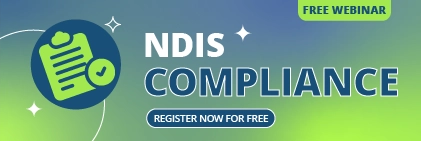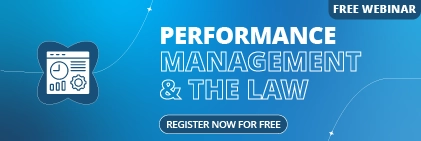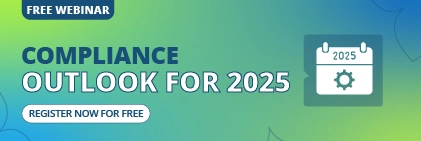Ever feel like you’re juggling a dozen different balls at once? That’s what running a business in Australia can feel like today. You’ve got data privacy laws, industry-specific regulations, and the constant threat of cyberattacks to worry about. It’s a lot. That’s why innovative companies aren’t just crossing their fingers and hoping for the best; they’re turning to Governance, Risk, and Compliance (GRC) systems.
Think of a GRC system as your business’s central command centre. It brings all those scattered pieces of your policies, risk assessments, and compliance checks into one clear, easy-to-manage platform. This isn’t just about avoiding fines but building a trustworthy brand to handle anything the world throws.
For Australian businesses, picking the right GRC system is a big deal. You need a platform that understands our local laws and works as you do. So, we’ve compiled a list of the top 10 GRC systems helping Australia’s most respected brands survive and thrive.
1. Sentrient
Sentrient is an all-in-one GRC and HR solution built in Australia. Its mission is to help businesses handle all their legal and compliance duties without the headache. The platform is super simple to use and has everything you need in one place, from managing policies to tracking incidents and even running staff training.
Key Features:
- Made for Australia: It’s built with our specific laws and workplace rules in mind.
- Automated Policy Management: No more chasing signatures! It centralises all your policies and ensures everyone has read and acknowledged them.
- Risk and Incident Registers: A single spot to log and manage risks and incidents.
- Online Training: It even comes with its e-learning system to ensure your staff is up to date on compliance training.
Integrations: Sentrient’s real power is how it all works together. Its GRC, training, and HR tools perfectly fit and play nicely with other popular HR and payroll systems.
Pros and Cons:
- Pros: The biggest plus is its focus on Australian laws. It’s easy to use and a truly integrated solution.
- Cons: They don’t publish their prices, so you must ask for a quote, which can be a bit of a roadblock for smaller teams just looking for a quick estimate.
Best Suited for: Any Australian business, big or small, that wants a simple, complete GRC solution tailored for our local rules.
Pricing: You’ll need to contact them for a custom quote.
2. StandardFusion
StandardFusion is about making compliance and risk management less of a chore. This GRC platform is known for being incredibly flexible and has a clean, easy-to-navigate design. It’s a favourite among growing companies because it can grow with them.
Key Features:
- Flexible Control Management: Map your controls to various standards and frameworks.
- Policy and Risk Management: A central hub for all your policies, risk assessments, and registers.
- API-Driven: A powerful API lets you connect it to many of your other security and business tools.
- Customisable Workflows: You can tweak it to fit your company’s unique processes.
Integrations: It integrates with a wide range of third-party security and business tools through its robust API.
Pros and Cons:
- Pros: Very customisable and user-friendly. It’s fantastic for managing audits and gathering evidence.
- Cons: The reporting could be better, and because it’s so powerful, it can take a little time to learn your way around.
Best Suited for: Small to medium-sized businesses with a dedicated GRC team that need a scalable and customisable tool to handle multiple compliance frameworks.
Pricing: Not publicly available; they provide custom quotes.
3. Workiva
Workiva is an enterprise-level platform that goes beyond GRC by integrating financial and sustainability (ESG) reporting. Many of the world’s biggest companies trust it as a single source of truth for their data. Its real strength is its seamless collaboration with everyone – from internal teams to external auditors.
Key Features:
- Integrated Reporting: Connects financial, non-financial, and control data for a unified view.
- AI-Powered Automation: AI handles tedious tasks like evidence requests and risk assessments, giving you back time.
- Real-time Collaboration: Everyone works in one secure platform with advanced permissions, even external auditors.
- Audit-Ready: All your documents are centralised and always up to date, making audits a breeze.
Integrations: It connects with many business systems, like your ERPs, to pull all your data into one place.
Pros and Cons:
- Pros: Unbeatable for integrated reporting and collaboration, especially for large companies. The AI automation is a game-changer for efficiency.
- Cons: It’s an enterprise solution, which can be complex and expensive for smaller businesses.
Best Suited for: Large enterprises and complex organisations that need to bring financial, ESG, and GRC reporting all under one roof.
Pricing: Not publicly disclosed.
4. PaliGRC
PaliGRC is another great Australian GRC option. It’s a complete software package that automates all your GRC needs. Its commitment to data sovereignty makes it stand out – all your data is hosted here in Australia. Plus, their transparent, fixed-cost pricing means no surprise bills.
Key Features:
- Australian Data Sovereignty: Your data stays in Australia, which is a big plus when meeting local regulations.
- Fixed-Cost Pricing: No hidden fees or extra charges for more users.
- Risk Registers & Controls: A simple way to track and manage risks across your company.
- Incident Management: A straightforward process for logging and handling incidents and breaches.
Integrations: It works as a comprehensive, standalone system, but it’s built to be flexible and adaptable to your needs.
Pros and Cons:
- Pros: The Australian data hosting and fixed-cost pricing are huge advantages. The interface is also very user-friendly.
- Cons: It’s a comprehensive solution, but it might not have the same depth of features or integrations as some bigger international players.
Best Suited for: Australian businesses that care about keeping their data local and want a clear, predictable pricing model.
Pricing: Fixed-cost pricing model; contact them for details.
5. CyberCX
CyberCX is Australia’s largest cybersecurity company, and its GRC solutions are a core part of its work. This isn’t just about software; it’s about partnering with experts. It offers a full suite of services, from GRC strategy and planning to implementation and ongoing support. It’s the perfect choice for companies that need a guiding hand through the complicated cyber risk and compliance world.
Key Features:
- Cybersecurity-Focused GRC: Their solutions are built on a deep understanding of today’s cyber threats.
- Expert Consulting: You get to work with GRC professionals who know their stuff.
- Identity and Access Management: Strong tools for ensuring only the right people have access to your critical data.
- Cloud Security: They help you manage risk and follow best practices in the cloud.
Integrations: As a service-based company, they use and integrate with various GRC and security tools to create a custom solution for you.
Pros and Cons:
- Pros: The deep cybersecurity expertise is a significant advantage for companies with high cyber risk. It’s a complete package of services, not just software.
- Cons: It’s more of a consulting service with software than just a GRC system you buy off the shelf, so it might not be for everyone.
Best Suited for: Businesses of all sizes, especially those with significant cyber risk who need an expert partner to help them build their GRC program.
Pricing: Varies based on the services you need.
6. MetricStream
MetricStream is a global leader in GRC. They offer a robust, scalable platform that brings risk, compliance, and audit management together for large enterprises. If you’re in a heavily regulated industry like finance or healthcare, you’ve probably heard of them – they’re a trusted name for a reason.
Key Features:
- Enterprise-Grade IRM: A single platform to manage all types of risk, from operational to third-party.
- Deep Functionality: A vast range of modules for everything from compliance and audit to policy management.
- Regulatory Change Management: This involves monitoring new regulations and helping you adjust your internal policies accordingly.
- Advanced Analytics: Gives detailed insights and dashboards to see your risk landscape.
Integrations: It integrates with a wide variety of enterprise systems.
Pros and Cons:
- Pros: It’s a comprehensive and powerful platform, perfect for big, complex organisations. It’s an industry leader with a reputation for quality.
- Cons: Setting up and running can be very complex and expensive. The learning curve is steep so that it might be too much for smaller teams.
Best Suited for: Large multinational corporations with complicated GRC needs in highly regulated fields.
Pricing: Not public; costs can be high, starting from around $75,000 annually.
7. SailPoint
In a world where identity is everything, SailPoint is a leader. Their GRC solutions are all about managing access risk. Using AI, their platform ensures that everyone has the proper access to do their job – no more, no less. This is important for preventing breaches and proving compliance with regulations.
Key Features:
- Identity-Centric GRC: It manages user access and identities to reduce risk.
- AI-Driven Access Modelling: AI helps you create and refine access roles, preventing people from having too much access.
- Automated Compliance: Streamlines certifications and audits by automatically enforcing access policies.
- Real-time Risk Analysis: Constantly monitors user behaviour to flag risky access.
Integrations: It integrates with many applications and systems, giving you a complete view of all your identities.
Pros and Cons:
- Pros: A compelling solution for managing identity-related risk, which is a growing concern. The AI-driven automation is a big selling point.
- Cons: It specialises in identity security, so it may not be the right choice if you need a GRC solution for broader things like operational risk.
Best Suited for: Large to medium-sized businesses that need to prioritise identity security.
Pricing: You’ll need to get a custom quote.
8. Corpgovrisk
Corpgovrisk (CGR) offers a single platform that connects assurance, audit, compliance, safety, and risk management. With decades of combined experience, CGR provides a unified picture of your organisation’s risk landscape. It’s scalable and has a strong presence in Australia.
Key Features:
- Unified Platform: Links all your GRC functions in one place.
- Enterprise Uncertainty Management: Helps you manage risk at every business level.
- Mobile App: Offers live reporting via a mobile app for on-the-go management of incidents and safety.
- ESG Management: Manages your performance against any ESG framework and helps with reporting.
Integrations: It’s designed to be a single, integrated platform where all modules work seamlessly.
Pros and Cons:
- Pros: A great, all-in-one platform for a complete view of risk. The intense focus on safety and ESG is a key benefit.
- Cons: The interface might feel a little dated compared to newer cloud-native systems.
Best Suited for: Companies in various industries that need a single platform to manage their GRC, safety, and ESG obligations.
Pricing: You’ll need to request a quote.
9. Vanta
Vanta quickly becomes a favourite among startups and growing tech companies. It automates compliance to help you get and stay certified with the SOC 2 and ISO 27001 frameworks. Vanta makes it easy to show customers and partners that you take security seriously, which can be a competitive advantage.
Key Features:
- Compliance Automation: It constantly monitors your systems and automates the collection of evidence for audits.
- Extensive Framework Coverage: Supports more than 35 different compliance frameworks.
- AI-Enabled Trust Centre: A customisable portal where potential customers can see your security posture.
- Vendor Risk Management: A structured way to check and monitor your vendors.
Integrations: Vanta connects with many cloud providers, HR systems, and security tools.
Pros and Cons:
- Pros: It’s fantastic for automating compliance and speeding up audits. The trust centre is an excellent tool for sales and marketing.
- Cons: Its GRC features focus more on IT and cybersecurity compliance, so it might not cover all your general business risks.
Best Suited for: Fast-growing tech startups and mid-sized companies that must quickly comply with frameworks like SOC 2 or ISO 27001.
Pricing: Not public; you’ll have to ask for a quote.
10. CAMMS
CAMMS is a global provider of GRC and performance management software. Their platform is designed to simplify GRC by directly linking risk to business goals. By helping you align risk with strategy, CAMMS enables you to make smarter decisions and handle uncertainty more confidently.
Key Features:
- Strategic GRC: A unique feature that links your risk and compliance efforts directly to your business objectives.
- Comprehensive Modules: Offers a full suite of modules for risk, compliance, incident, and audit management.
- Business Continuity Management: Tools to help you plan for and manage disruptions.
- Vendor Management: A great way to manage and assess the risk of your third-party vendors.
Integrations: It integrates with various enterprise systems, including Microsoft Dynamics 365 and Power BI.
Pros and Cons:
- Pros: The ability to link GRC to your core business strategy is a powerful feature. It’s a very comprehensive solution.
- Cons: The pricing isn’t publicly available, and the platform might be more complex than some smaller businesses need.
Best Suited for: Mid-to-large-sized organisations that want to embed GRC into their strategic planning and link risk management to their business goals.
Pricing: You’ll need to contact them for a quote.
Final Thoughts
So, which one is right for you? The answer is not simple. It’s like buying a car; what’s “best” depends on your lifestyle.
If you’re an Australian business that values simplicity, local support, and a user-friendly platform, Sentrient and PaliGRC are fantastic starting points. Workiva or MetricStream might be the way to go for a large company with complex reporting needs. If cybersecurity is your primary concern, you can’t go wrong with the expertise of CyberCX or the identity focus of SailPoint. And if you’re a scaling tech company, Vanta offers a modern, automated approach to compliance.
The bottom line? Choosing a GRC system is a strategic move that sets your business up for success. By doing your homework and picking a tool that fits your unique needs, you’re not just buying software but investing in your brand’s future.
FAQs
1. What exactly is GRC?
GRC is a framework for managing a company’s Governance (how it’s run), Risk (what could go wrong), and Compliance (following the rules). It’s all about ensuring your business is well-managed, secure, and legally sound.
2. Why is a GRC system important for Australian companies?
Australia has unique laws and regulations, from the Privacy Act to workplace safety rules. GRC system helps you manage all these requirements in one place, so you’re always audit-ready and can avoid costly mistakes.
3. How much does a GRC system usually cost?
The price tag varies a lot. Some systems have a fixed fee, but many bigger players offer custom, quote-based pricing. It usually depends on your company’s size and the features you need.
Recommendations
The Sentrient GRC System is a standout recommendation for Australian businesses of all sizes. It’s an easy-to-use, all-in-one solution built with the Australian market in mind. With Sentrient, you can manage policies, risks, incidents, and employee training from a single, intuitive platform. Its focus on local compliance and integrated HR features makes it an excellent choice for any business looking to build a strong, compliant culture without the usual headaches.
Read More About Governance, Risk Management, and Compliance:
- Essential GRC System for Australian Businesses to Stay Compliant
- From Spreadsheets to Smart Systems: Evolving GRC in Independent Schools
- Top 10 GRC Software Tools Every Business Should Consider
- How GRC Strategies Protect Your Organisation from Risks and Liabilities
- Overcoming GRC Implementation Challenges: A Comprehensive Guide





